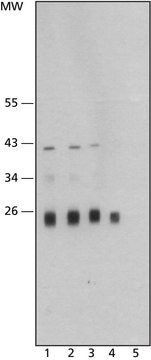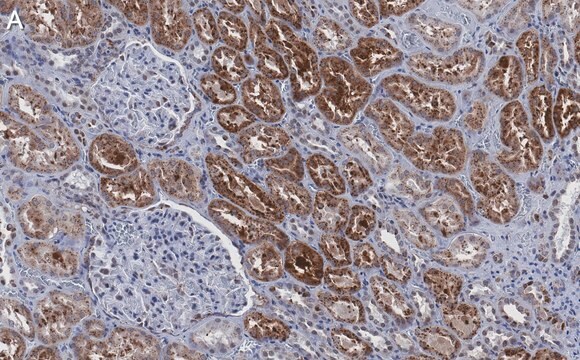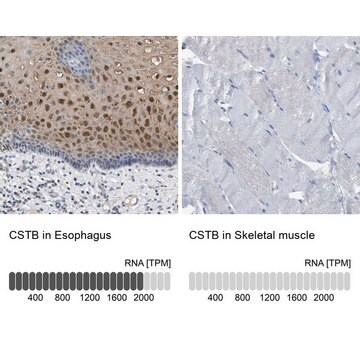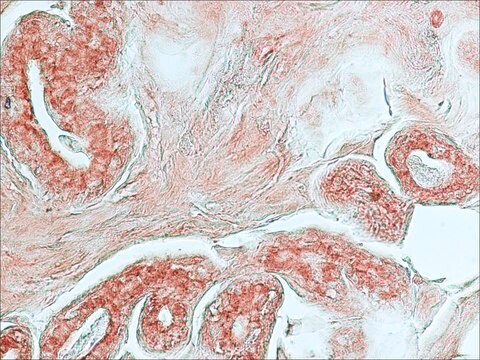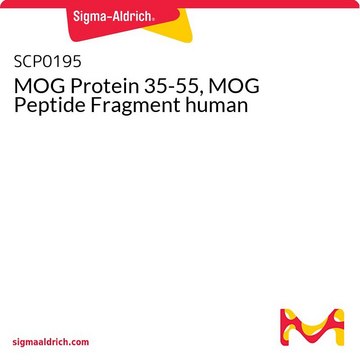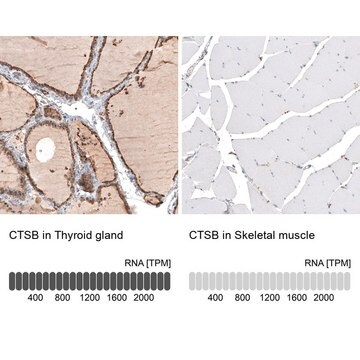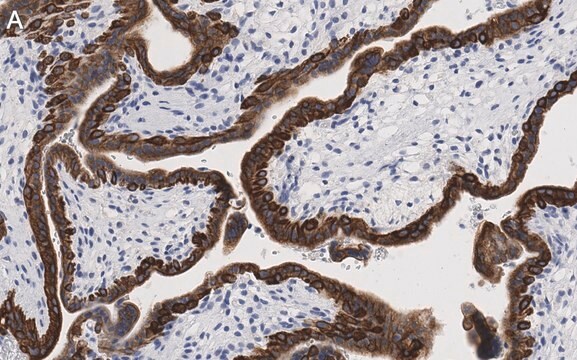C6243
Monoclonal Anti- Cathepsin B antibody produced in mouse
clone CB59-4B11, purified from hybridoma cell culture
Sinónimos:
Anti-APPS, Anti-CPSB, Anti-RECEUP
About This Item
Productos recomendados
origen biológico
mouse
Nivel de calidad
conjugado
unconjugated
forma del anticuerpo
purified immunoglobulin
tipo de anticuerpo
primary antibodies
clon
CB59-4B11, monoclonal
Formulario
buffered aqueous solution
mol peso
antigen ~25 kDa
reactividad de especies
rat, human
concentración
~1.5 mg/mL
técnicas
immunohistochemistry: suitable
indirect ELISA: suitable
western blot: 4-8 μg/mL using HCT-116 cells.
isotipo
IgG1
Nº de acceso UniProt
Condiciones de envío
dry ice
temp. de almacenamiento
−20°C
modificación del objetivo postraduccional
unmodified
Información sobre el gen
human ... CTSB(1508)
rat ... CTSB(64529)
Descripción general
Inmunógeno
Aplicación
Acciones bioquímicas o fisiológicas
Monoclonal Anti-Cathepsin B specifically recognizes human1 and rat1 cathepsin B (~ 25 kDa). The antibody epitope resides within the peptide sequence EPGYSP which corresponds to amino acids 212-217 of human cathepsin B. The antibody does not cross react with the closely related lysosomal cysteine proteases: cathepsins L, H, K, S, V, and W.
Cathepsins significantly takes part in the immune response, by processing antigens into peptides for its presentation through MHC class II molecules.
Forma física
Cláusula de descargo de responsabilidad
¿No encuentra el producto adecuado?
Pruebe nuestro Herramienta de selección de productos.
Opcional
Producto relacionado
Código de clase de almacenamiento
10 - Combustible liquids
Clase de riesgo para el agua (WGK)
WGK 1
Punto de inflamabilidad (°F)
Not applicable
Punto de inflamabilidad (°C)
Not applicable
Elija entre una de las versiones más recientes:
¿Ya tiene este producto?
Encuentre la documentación para los productos que ha comprado recientemente en la Biblioteca de documentos.
associated with suppression of angiogenesis
the Endo- and Exopeptidase Activities of Cathepsin B
Nuestro equipo de científicos tiene experiencia en todas las áreas de investigación: Ciencias de la vida, Ciencia de los materiales, Síntesis química, Cromatografía, Analítica y muchas otras.
Póngase en contacto con el Servicio técnico